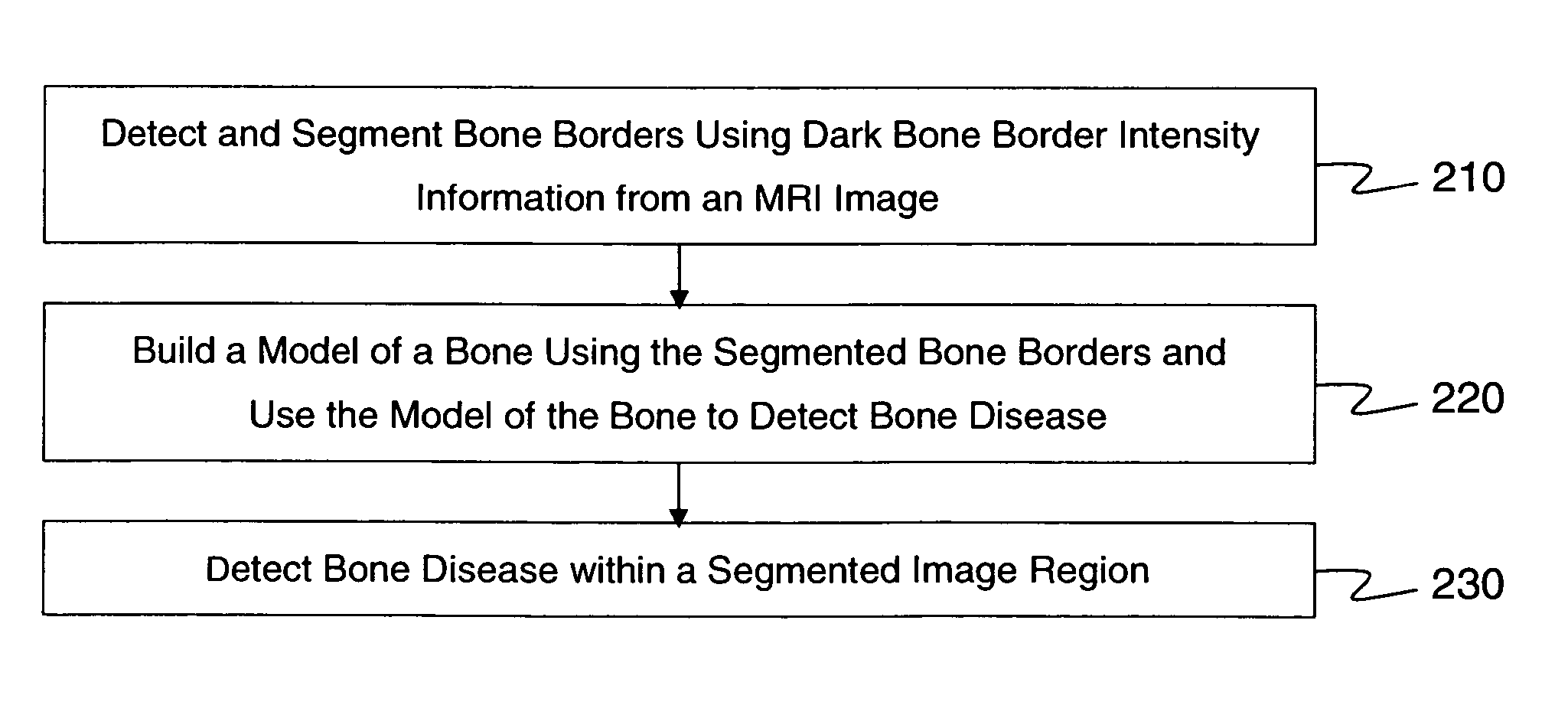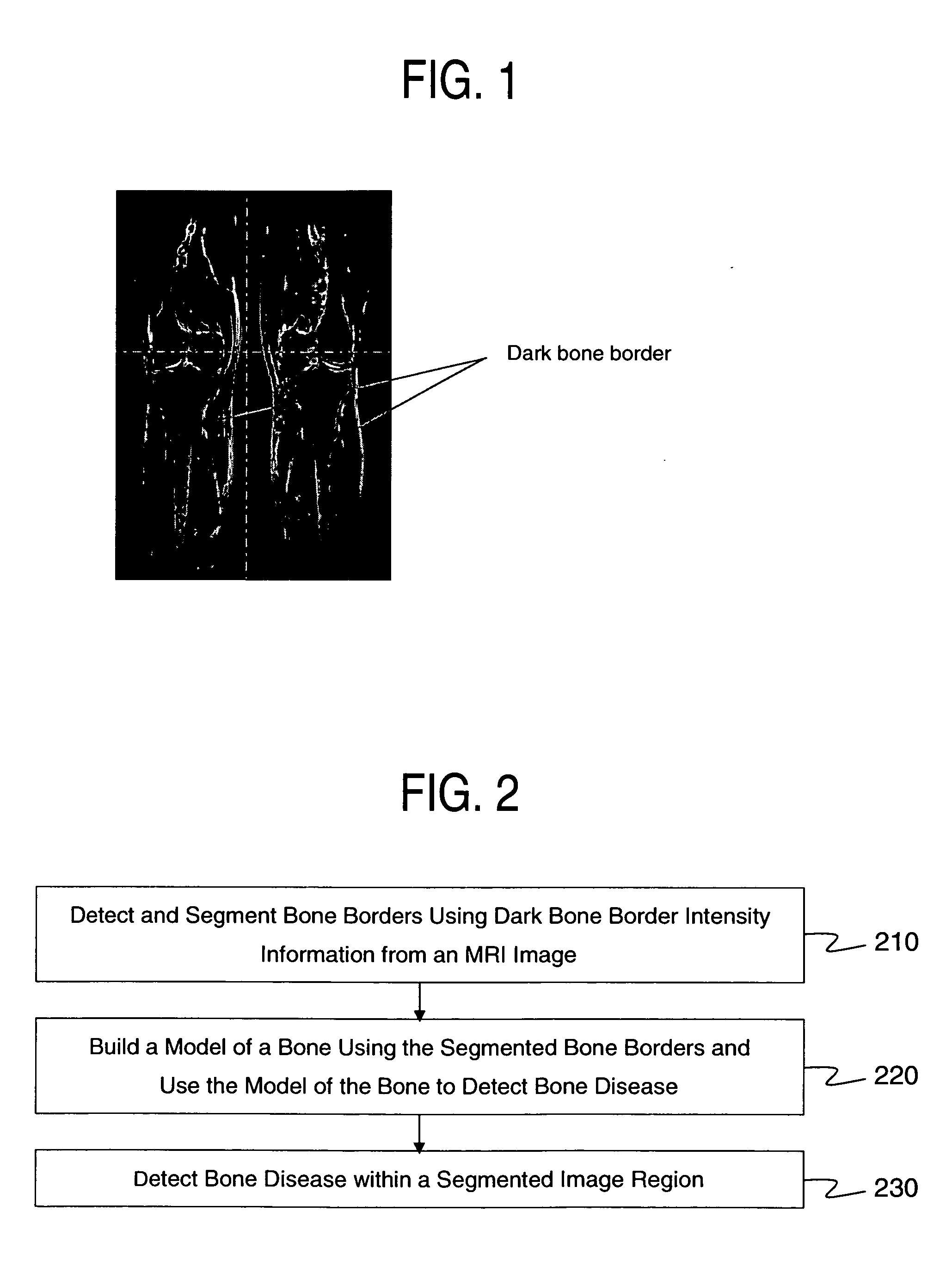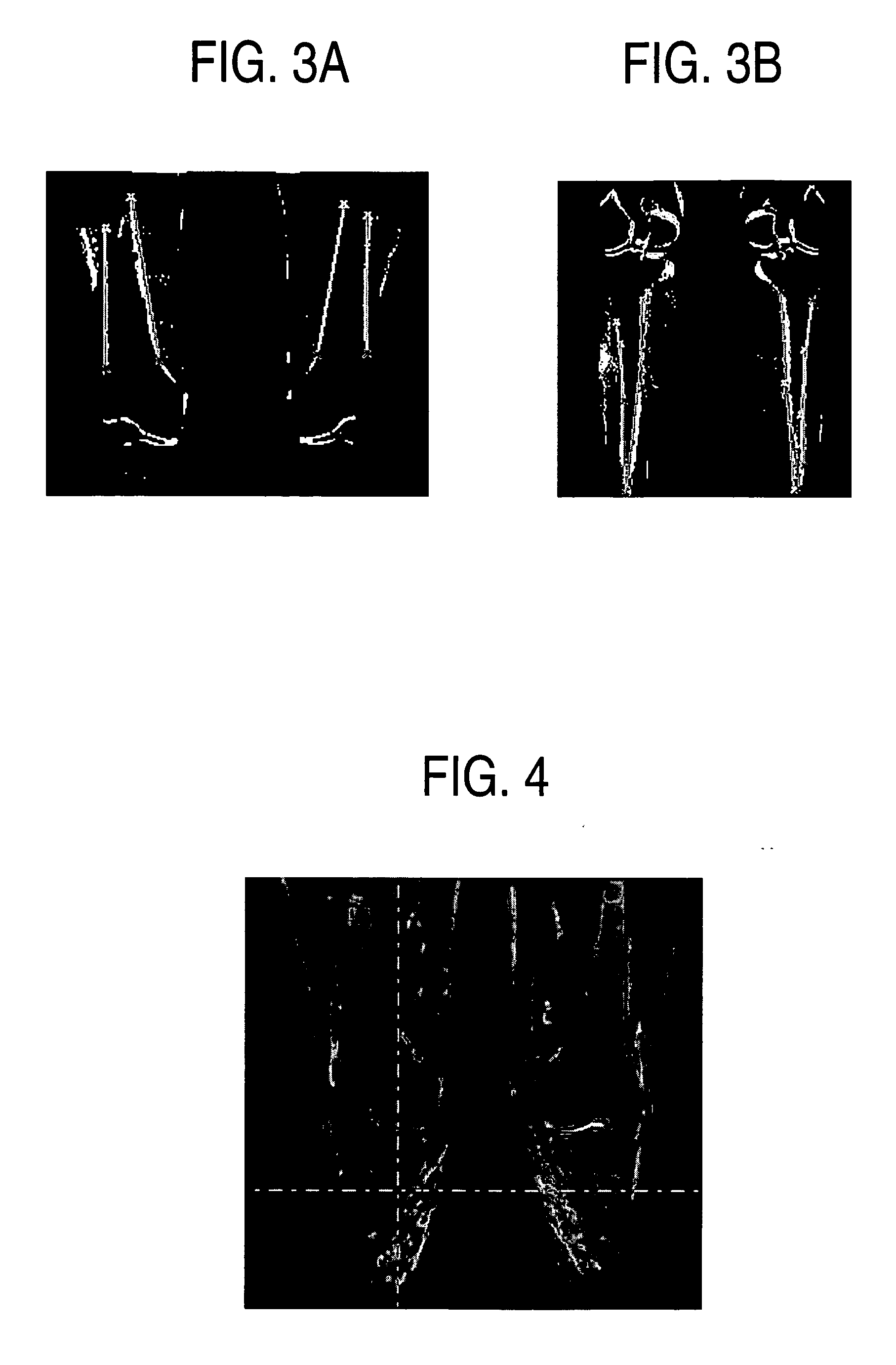Automatic bone detection in MRI images
a bone detection and image technology, applied in image analysis, image enhancement, instruments, etc., can solve the problems of difficult automatic segmentation and classification of tissues in mri images, difficult design of automatic segmentation tools, and less effective mri than x-rays or ct for detecting destruction of bone structur
- Summary
- Abstract
- Description
- Claims
- Application Information
AI Technical Summary
Benefits of technology
Problems solved by technology
Method used
Image
Examples
Embodiment Construction
[0018] Hereinafter, exemplary embodiments of the present invention will be described in detail with reference to the accompanying drawings.
[0019] In exemplary embodiments of the present invention, black border around bones in magnetic resonance imaging (MRI) images is extracted and used to represent bone contour. For example, cortical bone and periosteum appear consistently dark on HASTE, T1 and T2 STIR (short tau-inversion recovery) MRI images. Intensity normalization can be used as a preprocessing step.
[0020] After the bone border is extracted, bone metastases can be detected as dark spots inside the bone, such as in the case of a T1 pulse sequence, or as bright spots, in the case of a T2 STIR pulse sequence. Further classification step using additional features may be included to automatically detect bone metastases sites and / or to help to discriminate them from false positive findings.
[0021] In a method of detecting bone in magnetic resonance imaging (MRI) images, according t...
PUM
 Login to View More
Login to View More Abstract
Description
Claims
Application Information
 Login to View More
Login to View More - R&D
- Intellectual Property
- Life Sciences
- Materials
- Tech Scout
- Unparalleled Data Quality
- Higher Quality Content
- 60% Fewer Hallucinations
Browse by: Latest US Patents, China's latest patents, Technical Efficacy Thesaurus, Application Domain, Technology Topic, Popular Technical Reports.
© 2025 PatSnap. All rights reserved.Legal|Privacy policy|Modern Slavery Act Transparency Statement|Sitemap|About US| Contact US: help@patsnap.com



